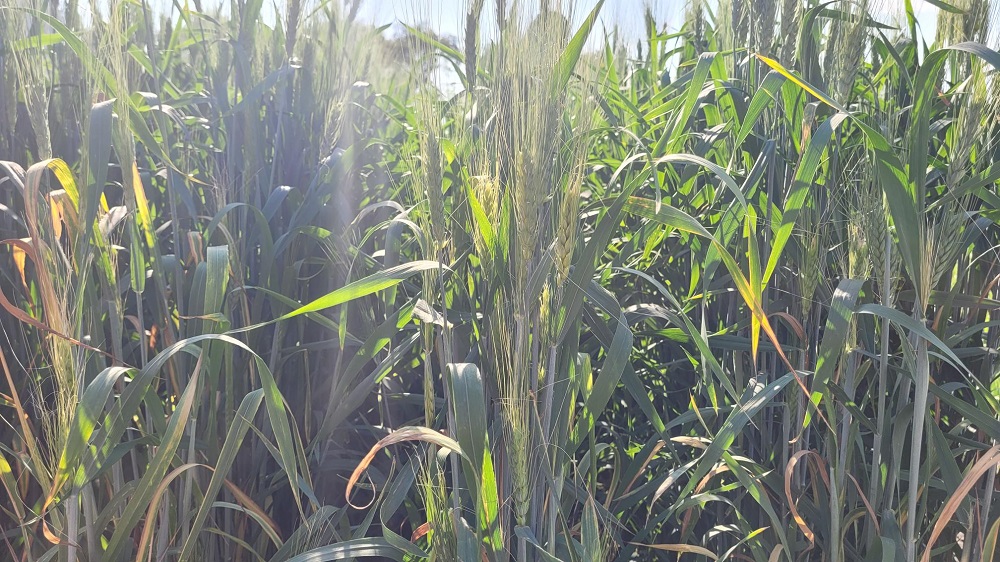It’s the final leg of this year’s harvest in Saskatchewan.
The Saskatchewan Ministry of Agriculture’s Crop Report notes 91 percent of the crop is combined, up from 82 percent last week, and ahead of the 5 and 10-year averages of 73 percent each.
The southwest (98 percent) and west-central (97 percent) are essentially done, followed by the northwest at 90 percent complete, southeast 89 percent, northeast at 88 percent. The east-central region had the biggest jump in progress, going from 66 percent to 82 percent.
Many crops are either completely harvested or close to it, as 93 percent of oats are combined and 88 percent of canary seed is in the bin. Producers continue to focus on later maturing crops, as 80 percent of canola, 63 percent of flax, and 64 percent of soybeans are off the field.
Crop damage included grasshoppers, dry conditions, wind damaging standing crops, and reports of frost in the north.
While another week of dry weather helped farmers spend more time in the field, it decreased topsoil moisture conditions. Crop land is rated as 20 percent adequate, 45 precent short and 35 percent very short. Hay and pasture land is rated as 16 percent adequate, 44 percent short, and 40 percent very short.
Limited moisture has affected water supplies for livestock producers, who are experiencing moderate shortages, according to the crop report.
Livestock producers concerned about their water quality can bring a water sample to their local regional office.
A region-by-region breakdown is below.
Southeast
The southeast is in the final stretch of their harvest operations with 89 per cent of the crop off, ahead of the five-year average of 78 per cent.
With most of the crops harvested, only a few acres of spring wheat, durum and barley are left standing. Chickpeas, lentils, field peas, mustard and fall-seeded cereals are all completed in the region. Producers are currently working on flax at 94 per cent complete, oats at 93 per cent complete, canary seed at 80 per cent complete, , canola at 79 per cent complete and soybeans at 65 per cent complete.
Very little rain moved through the region this week, allowing for harvest to progress rapidly. The most rain received in the area was 15 mm in the Carnduff area. Topsoil moisture is becoming limited in the region. Twenty-five per cent of cropland has adequate soil moisture, 41 per cent is short and 34 per cent is very short. Similarly, 23 per cent of hay and pastures have adequate moisture, 43 per cent are short and 34 per cent are very short. Many producers in the area are experiencing water shortages for livestock and are concerned about the quality of water, as a result, these producers have turned to hauling water.
Crop damage this week was caused by grasshoppers and drought conditions. Producers are busy wrapping up harvest and working their fields for the fall. Producers are also hauling water and feed for their animals while preparing for winter.
Southwest
The region is now 98 per cent completed harvest, ahead of the five-year average of 89 per cent. Producers in the area need rain and moisture before next year’s crops are seeded.
Producers in the southwest are now focusing on preparing for winter as they wait for their last fields of canola at 95 per cent complete and flax at 68 per cent complete, to mature. Producers hope more rain and moisture come to replenish the soils for next year.
The most rain recorded this week was six mm in the Big Beaver area. This caused a decrease in topsoil moisture. Cropland is now 44 per cent short for moisture, 56 per cent is very short. Forty per cent of hay and pastures are short in moisture and 60 per cent are very short. Producers are experiencing water shortages for their livestock and are concerned about the quality of water available for their animals.
With the crops off, producers are working their fields and marketing grain. Livestock producers are marketing cattle, hauling feed and water and preparing for winter.
East-Central
A dry week in the east-central region has given producers a chance to combine their fields with minimal interruptions. The region is now 82 per cent complete harvest, an increase of 16 per cent over last week. The region is ahead of the five-year average of 64 per cent.
Fall cereals, durum, mustard, peas and lentils are completed for the year. Producers are working on the few remaining acres of spring wheat and barley at 94 per cent complete, oats at 89 per cent completed and canary seed at 87 per cent completed. Producers are waiting for their canola at 66 per cent complete, flax at 57 per cent complete and soybeans at 42 per cent complete to finish maturing.
Minimal rainfall was received in the region this week, with Esterhazy recording the most at two mm. Soil moisture in the region is starting to become short. In cropland, 29 per cent has adequate moisture, 53 per cent is short and 19 per cent is very short. Twenty per cent of hay and pastures have adequate moisture, 50 per cent are short and 30 per cent are very short. Livestock producers are anticipating water supply shortages for their animals this fall, with many of them also concerned about their water quality.
Crop damage this past week is due to wind damage and drought conditions, with grasshopper numbers in the region reported to be decreasing. Producers are busy combining and marketing grain. Producers are also hauling water and feed for their animals and preparing for fall and winter.
West-Central
Harvest is essentially complete this week in the west central region, with many producers parking their combines and hoping for moisture to follow. The area is 97 per cent completed harvest, ahead of the five-year average of 75 per cent.
With pulses, fall cereals and spring cereals completed in the region, only a few standing acres remain. Producers are currently cleaning up their canola at 95 per cent complete, mustard at 93 per cent complete, canary seed at 92 per cent complete and flax at 82 per cent complete.
Only trace amounts of rain were reported this week in the region, causing another decrease in topsoil moisture levels. Cropland topsoil is now seven per cent adequate for moisture, 39 per cent short and 54 per cent very short. Two per cent of hay and pastures have adequate topsoil moisture, 27 per cent are short and 71 per cent are very short in moisture. Producers in the region are experiencing water supply shortages for their livestock and are hauling water. Producers are also concerned about the quality of water for their animals.
With the crop mostly off, producers are marketing grain, applying post-harvest herbicides and working their fields before they freeze. Producers are also moving cattle home, hauling water and feed and preparing for winter.
Northeast
A dry week in the northeast has allowed producers to make great harvest progress. The region is now 88 per cent complete, ahead of the five-year average of 59 per cent.
With fall cereals, spring cereals and pulses harvested for the year, many producers are working on their later maturing crops to complete harvest. Oats are 95 per cent complete, canola is 77 per cent complete, canary seed is 63 per cent completed and flax is 25 per cent complete for the year.
The most rain recorded this week was just under three mm in the Vonda area. Despite the minimal moisture, topsoil moisture levels are still adequate. Forty-eight per cent of cropland has adequate moisture, 48 per cent is short and four per cent is very short. Hay and pasture land is rated as 38 per cent adequate, 55 per cent are short and seven per cent are very short. Although not experiencing shortage currently, producers in the region are anticipating shortages to start occurring if the rain doesn’t return. Producers in the region are also concerned about water quality for their livestock.
Crop damage this week was due to light frosts, wind and waterfowl landing in the standing crops. Producers in the region are currently busy combining, applying post-harvest herbicides and marketing grain. Producers are also marketing cattle, moving cattle home and preparing for winter.
Northwest
Producers in the northwest have the end of harvest on the horizon, with 90 per cent of this year’s crop in the bin. This is ahead of the five-year average of 57 per cent.
Fall cereals, pulses and spring cereals are harvested for the year. In the region, the remaining crops are oats at 92 per cent complete, canola at 83 per cent complete and flax at 63 per cent complete.
There were only trace amounts of rain reported in the region, meaning a decrease in topsoil moisture. Forty-two per cent of cropland has adequate topsoil moisture, 37 per cent is short and 21 per cent is very short. Hay and pasture land topsoil moisture is rated at 27 per cent adequate, 48 per cent is short and 25 per cent is very short. Producers in the region are currently experiencing water supply shortages for their livestock and are now hauling water. Producers in the region are also concerned with their water quality.
Crop damage this past week is due to some light frost, wind damage and wildlife in the fields. Producers are busy finishing harvest, applying post-harvest herbicides and working their fields before freeze-up. Produces are also marketing cattle, hauling water and feeding and moving cattle home for the winter.








